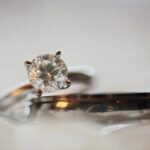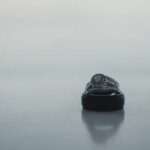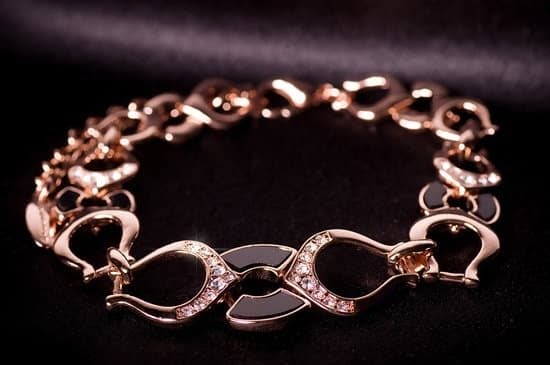Are you wondering how to test jewelry for gold? Whether you’re a jewelry enthusiast or looking to sell some pieces, it’s essential to know the authenticity of your gold jewelry. In this article, we’ll explore the importance of testing for authenticity and various methods for testing gold jewelry at home.
Testing jewelry for gold is crucial to ensure its value and genuineness. With the increasing prevalence of counterfeit items in the market, it’s become more important than ever to verify the purity of your gold pieces. By understanding different testing methods, you can confidently assess the quality of your jewelry and make informed decisions about buying or selling.
In the upcoming sections, we’ll delve into different approaches for testing gold jewelry at home. From using a gold testing kit and acid tests to employing magnets and examining markings on jewelry, we’ll cover a range of techniques that can help you determine whether your jewelry is made of genuine gold.
Whether you’re a collector, buyer, or seller, knowing how to test jewelry for gold is an invaluable skill that can protect your investments and ensure that you’re getting what you pay for.
The Importance of Testing for Authenticity
When it comes to purchasing or selling jewelry, especially gold, it is crucial to ensure that the item is authentic. The importance of testing for authenticity cannot be overstated, as there are many counterfeit pieces of gold jewelry on the market. Whether you are buying from a reputable dealer or an individual seller, testing the authenticity of gold jewelry is essential to protect your investment.
Protecting Your Investment
Testing for the authenticity of gold jewelry is important because it protects your investment. Gold is a valuable commodity, and purchasing fake gold can result in financial loss. By thoroughly testing any gold jewelry before purchasing or selling it, you can have peace of mind knowing that you are dealing with genuine gold.
Ensuring Quality and Value
Testing for authenticity also ensures that you are getting what you paid for in terms of quality and value. Authentic gold jewelry carries with it a certain level of craftsmanship and value that counterfeit pieces do not possess. By testing for authenticity, you can be confident that you are getting a high-quality piece of jewelry that holds its value over time.
Legal Implications
Moreover, testing for the authenticity of gold jewelry is important from a legal standpoint. Selling counterfeit goods is illegal in most jurisdictions, and knowingly purchasing counterfeit items can also have legal repercussions. By thoroughly testing any gold jewelry before buying or selling it, you can avoid potential legal issues related to counterfeit goods.
Different Methods for Testing Gold Jewelry at Home
Testing jewelry for gold at home can be a valuable skill for anyone who wants to ensure the authenticity of their precious metal pieces. While it is always best to have jewelry tested by a professional, there are several methods that can be used at home to determine whether a piece is made of real gold or not.
Using a Gold Testing Kit
One of the most reliable ways to test jewelry for gold at home is by using a gold testing kit. These kits typically come with a set of testing acids and a testing stone. By scratching the gold against the testing stone and applying different acids, it is possible to determine the karat value of the gold based on the reaction with the acid.
How to Test Gold Jewelry Using Acid
Another method for testing gold jewelry at home involves using acid testing. This process involves applying nitric acid to a small scratch on the piece of jewelry and observing the color change. Genuine gold will not react or change color when exposed to nitric acid, while fake or lower karat gold will produce a reaction.
How to Use a Magnet to Test for Fake Gold
While this method is not foolproof, using a magnet can help detect fake gold jewelry. Real gold is not magnetic, so if a piece of jewelry sticks to the magnet, it is likely not made of genuine gold. However, some pieces with small amounts of other metals may still be non-magnetic even if they are not real gold.
These methods can provide valuable insight into whether your jewelry is made of real gold or not. However, it’s important to keep in mind that professional testing from a jeweler or appraiser may still be necessary for complete accuracy in determining authenticity and karat value.
Using a Gold Testing Kit
A gold testing kit is a simple and efficient way to test the authenticity of your gold jewelry. These kits are readily available at jewelry stores and online retailers and are easy to use.
A typical gold testing kit will contain a set of testing needles or stones, along with instructions on how to use them. The testing process involves scratching the surface of the gold piece against the testing stone or applying acid from the testing bottle to the scratched area.
One advantage of using a gold testing kit is that it provides a reliable result without damaging your jewelry. The testing needles or stones are made from different materials and have varying hardness levels, allowing you to determine whether your gold piece is authentic based on the results of the scratch test. In addition, the acid in the testing bottles reacts differently when applied to various metal alloys, helping you verify if your jewelry contains real gold.
Using a gold testing kit is a cost-effective option for individuals who want to verify their gold jewelry’s authenticity without relying on professionals’ services. With proper handling and following the instructions provided, this method can give you accurate results and peace of mind regarding your valuable possessions.
| Advantages | Description |
|---|---|
| Simple and efficient | The process is easy to understand and perform |
| Cost-effective | Allows individuals to test their own jewelry without expensive professional services |
| Gentle on Jewelry | The scratch test doesn’t cause damage if performed correctly |
How to Test Gold Jewelry Using Acid
Testing gold jewelry using acid is a common method used to determine its authenticity. It is important to test gold jewelry at home to ensure that you are getting what you paid for. While there are different methods for testing gold jewelry, using acid is one of the most reliable ways to determine if the piece is real gold or not.
When testing gold jewelry using acid, it is important to purchase a gold testing kit that includes nitric acid and a touchstone. This kit can be easily found in jewelry supply stores or online. Here’s a simple guide on how to use acid to test for gold authenticity:
- Prepare the testing area: Lay out the items from your gold testing kit on a flat surface.
- Use the touchstone: Scratch the item on the touchstone to create a visible streak.
- Apply nitric acid: Place a small drop of nitric acid onto the streak mark on the touchstone and observe any reaction.
If you notice any changes in color or if the mark disappears after applying the acid, then it is likely that your item is not real gold. However, if there is no reaction or discoloration, then it is more likely that the item is authentic.
It’s important to note that this method should be used with caution and may require some practice to master. There are also other ways to test for gold authenticity at home, but using acid provides a quick and reliable result when done correctly.
How to Use a Magnet to Test for Fake Gold
When it comes to testing jewelry for gold, one method that can be easily done at home is using a magnet. This simple test can help you determine if your gold jewelry is authentic or if it may be a fake. Keep in mind that this method is not always foolproof, but it can provide a good initial indication of the authenticity of your gold jewelry.
To use a magnet to test for fake gold, follow these steps:
1. Gather a magnet: You will need a strong and powerful magnet for this test. A neodymium magnet is recommended as it is known for its strength.
2. Hold the jewelry with the magnet: Take the piece of jewelry in question and hold the magnet close to it.
3. Observe the reaction: If the jewelry is attracted to the magnet or sticks to it, then it is likely not real gold. Real gold is not magnetic, so if the piece shows no attraction to the magnet, there’s a better chance that it’s genuine.
Remember that while this method can give you an initial idea of the authenticity of your gold jewelry, it is not definitive proof. For a more accurate assessment, consider using other testing methods such as acid testing or investing in a gold testing kit. Understanding how to test jewelry for gold using multiple methods can help increase your confidence in determining whether your precious pieces are genuine or not.
Other Ways to Test for Gold Authenticity
There are several other methods that can be used to test the authenticity of gold jewelry, aside from using acid or a testing kit. One of the easiest and most common ways to do this is by conducting a density test. Since gold is a dense metal, it will sink in water while other metals and materials will float.
To conduct this test, simply fill a container with water and drop the jewelry piece into it. If it sinks to the bottom, it is likely made of real gold.
Another way to test for gold authenticity at home is by using a ceramic plate. Simply rub the jewelry piece against the plate and observe the color left behind. Authentic gold should leave a gold streak on the ceramic plate, while fake gold will leave a black streak.
Additionally, another popular method is the skin test. When wearing gold jewelry, some people experience discoloration or skin irritation due to their body’s reaction with fake metals mixed into the piece. While this isn’t a foolproof method and may not always work for everyone, it can be an additional way to check for authenticity.
From density tests to skin reactions, there are several other methods available for testing jewelry for gold authenticity at home without the need for specialized equipment or professional assistance. These methods can provide added assurance when determining whether your jewelry is truly made of genuine gold or if it contains any other metals or materials.
Understanding the Markings on Gold Jewelry
It is essential for anyone who owns or purchases gold jewelry to understand the markings on their pieces. These markings, also known as hallmarks, can provide valuable information about the quality and authenticity of the gold. By learning how to interpret these markings, individuals can make more informed decisions about buying, selling, and caring for their gold jewelry.
One of the most common markings found on gold jewelry is the karat stamp. This stamp indicates the purity of the gold and is typically represented by a number followed by the letter “K” or “kt”. For example, 24K gold is considered pure gold, while 14K gold contains 14 parts pure gold and 10 parts other metals. Understanding these different levels of purity can help consumers assess the value and quality of their jewelry.
In addition to karat stamps, gold jewelry may also feature a maker’s mark or a trademark from the manufacturer. These marks can provide insight into the origin and authenticity of the piece. It is important to research and familiarize oneself with different maker’s marks to verify the legitimacy of a piece of gold jewelry. Learning how to test jewelry for gold involves understanding these hallmarks and using this knowledge to make informed decisions about buying and selling items.
| Key Marker | Explanation |
|---|---|
| Karat Stamp | Indicates purity level of the gold – commonly denoted with a number followed by “K” (e.g. 24K) |
| Maker’s Mark/Trademark | Provides insight into origin and authenticity of the piece – important for verification purposes |
Conclusion and Final Tips for Testing Jewelry for Gold
When it comes to testing jewelry for gold, it is important to ensure the authenticity of the piece before making any decisions regarding buying or selling. The value of gold is significant, and being able to accurately determine whether a piece is real can make a big difference in its worth. There are several methods for testing gold jewelry at home, each with its own level of reliability and accuracy.
One of the most popular ways to test for gold authenticity is by using a gold testing kit. These kits typically include solutions and testing needles that can help determine the karat of the gold. Another method involves using acid to test the metal content of the jewelry. This method requires caution and precision, but can be effective in identifying real gold from fake.
Additionally, using a magnet can also help in identifying fake gold jewelry, as real gold is not magnetic. It’s also important to pay attention to any markings on the jewelry, as these can indicate the purity and authenticity of the piece. Understanding these markings can provide valuable information when testing for gold.
In conclusion, testing jewelry for gold is an important skill that can save time and money in the long run. Whether using a testing kit, acid, or other methods, it’s essential to be thorough and careful when determining the authenticity of gold jewelry. By following these final tips and staying informed about different testing methods, individuals can confidently verify whether their jewelry is made of real gold or not.
Frequently Asked Questions
How Can I Test My Gold Jewelry at Home?
You can test your gold jewelry at home using a few different methods. One way is to use a magnifying glass to look for any markings or stamps that indicate the purity of the gold.
Another method is to perform a simple acid test using a testing kit specifically designed for gold. Additionally, you can use a nitric acid solution to test the authenticity of your gold jewelry.
How Can You Tell if Jewelry Is Real Gold?
There are several ways to tell if jewelry is real gold. One method is to look for any hallmarks or stamps on the jewelry that indicate its purity.
You can also perform a visual inspection to see if there are any signs of discoloration, tarnishing, or fading, which are not typically associated with real gold. Another way is to use a magnet – since gold is not magnetic, if the jewelry does not attract the magnet, it may be real gold.
Is the Magnet Test Accurate for Gold?
The magnet test is not considered accurate for testing gold. While pure gold is not magnetic, other metals used in counterfeit or lower-quality pieces of jewelry can be attracted to a magnet and give false results.
It’s best to use additional testing methods such as an acid test or professional appraisal to determine the authenticity of your gold items.

Welcome to my jewelry blog! My name is Sarah and I am the owner of this blog.
I love making jewelry and sharing my creations with others.
So whether you’re someone who loves wearing jewelry yourself or simply enjoys learning about it, be sure to check out my blog for insightful posts on everything related to this exciting topic!





